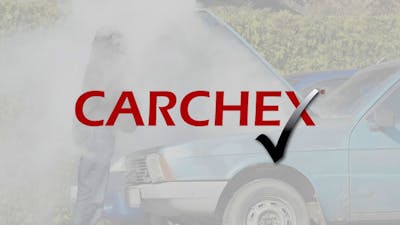Most Common Causes Why Your Car Won't Start
If you have a vehicle that won’t start, Car Talk experts can help. We will list out the most common reasons that a vehicle might not start and dive into the causes of this tricky issue.
In the Car Talk Community, one of our most common types of posts begins something like, “My car won’t start….” The unfortunate owner goes on to describe their particular circumstances and often says, “I replaced the battery, but the problem continues.” Most car starting problems do involve the battery. However, the underlying cause of the car’s failure may go deeper than the 12-volt battery being drained.
To find out just how common the “My car won’t start” curse is, we reached out to Car Talk alum and AAA Northeast’s Car Doctor, John Paul. We asked how many calls AAA gets each year on the topic of trouble starting.
Popular Warranty Providers
“AAA Northeast provides help to about 1 million vehicle owners each year whose cars won’t start,” John said. “In addition, AAA Northeast installs about 170,000 new batteries each year.”
- John Paul is a certified mechanic, and his insights helped us to shape our listing below.
Before we go into the minutiae of why your car will not start, let’s list the reasons why your car may not have started, with the most common issues and working our way down. We will then explain how and why the car became unable to start.
Why Your Car Won’t Start
Listed From Most to Least Likely
- The battery is drained
- Battery cable failure
- You are out of gas or out of EV battery charge
- Vehicle is not in park
- Your battery is frozen
- The car is a manual, and your left foot is not on the clutch
- Starter failure
- Fuel pump failure
- Key fob problems
- Alternator failure
- Bad spark plug wires or coil wiring, possibly shorted by water
- Cam position sensor or crank position sensor failure
- Rodent damage to critical wiring or fuel hoses
- Steering lock problem
- Shift interlock failure
- Clutch position sensor failure
- Broken timing belt
We’ve re-arranged our list below with things you may be able to do to get the car started at the top and work our way down to Carmageddon.
Won’t Start - Battery-Related Issues
If your car will not turn over at all or makes a rapid click click click, you may get lucky. A large percentage of cars that will not start simply have a loose battery cable or corrosion is preventing the electrons from doing their happy dance along the circuit. Any roadside service technician worth her salt can fix that in a jiffy. Techs carry a wrench and a battery terminal shiner-upper that can snug up your cable connector and remove any corrosion without fuss. If a bad connection turns out to be your issue, make sure you play the lottery today.
A dead battery will eventually happen to every car owner. At your annual or twice-annual service visit, the mechanic may check the battery’s health. If the car is three years old and they say, “We estimate the battery has about 30% of its life remaining,“ will you change it proactively? If you don’t, it will die in under a year if the tech’s guestimate was correct. Most likely on the day of a job interview.
Batteries are usually worn out by heat and long life, but they don't kick the bucket for good until a crisp fall morning when temperatures drop. We asked John Paul if AAA finds battery calls to be seasonal. He told us, “A battery’s cranking power can drop by 30% when it is cold enough for frost to appear.” He added, “Each year, on the first few days of subfreezing temperatures, battery help calls increase sharply.” A jump start might save your bacon that day, but the battery is on borrowed time. You will be buying a battery before Santa says, "Ho, ho, ho."
Didn’t want to hit that link? We understand that you may be enthralled by this story. However, let us say this: Be careful! Jump starting a car can hurt you, your car, and the car you are using as the jumpstarter. Call roadside assistance. If you crank a battery long enough, it can generate hydrogen gas. If you then apply a jumper cable to the battery terminal, a spark can cause the battery to pop (a.k.a. explode). Your author has witnessed this firsthand. Savvy mechanics will lay a dry towel over a battery when jumping a car and wear safety glasses. Sulfuric acid in your face and all over the engine bay is a bad way to start or end a day.
Car Won’t Start - No Gas or EV Charge
If your car doesn’t start, double check you have the energy to move it. If your car uses gas, are you sure you have some? If you own an EV, is it charged? There is a great scene in the movie Slingblade that illustrates this. A group of clever fellows are huddled around a lawn mower, trying to get it to start. The character named Karl Childers walks by, unscrews the gas cap, and says, “It ain’t got no gas in it.” Umm hmm.
Car Won’t Start - Battery Is “Frozen”
Even in extreme cold, a fully-charged battery will not freeze like a sulfur popsicle. However, an older battery on its last legs or one not fully charged for whatever reason may freeze. In the dead of winter, it is common for a battery to have some charge - enough to make the car crank slowly - but not enough to initiate the car to a full running state. If you live “up noth” and battery issues are causing you to lose sleep, there are battery warmers you can consider. Just be sure to remember to unplug it before you head out. Dragging your house down the road by an extension cord is embarrassing.
Car Won’t Start - Are You In Park?
If you have an automatic transmission with a physical shifter or a newfangled button panel, be sure your car is in Park. If you accidentally shut the car off while in D, R, or N, and it won’t restart, you simply need to put your foot on the brake, shift into Park and try again. Please send your thanks in the form of cash, money orders, or homemade banana bread to your author at Car Talk.
Car Won’t Start - Does It Have a Clutch By Any Chance?
Similar to the car being out of Park as described above, if your car kicks it old-school with a manual transmission, you may need to put your clutch to the floor for it to start. Older cars didn't require this. I vaguely remember my 1970s Toyota Supra leaping forward a few feet many times when I tried to start it in gear. If you discover you are in a car with a stick shift, put the clutch in and see if that solves the problem.
Car Won't Start - Have You Tried Yanking the Steering Wheel?
Some cars with older ignition lock systems can fail to allow you to start them if the wheel is turned and left in tension when you last parked. Try yanking the steering wheel to one side and turning the key. Then the other side. If it started, you simply unloaded the locking mechanism and allowed the car to do its thing. There is no defect or problem to fix in this case.
Car Won’t Start - Maybe It’s the Key Fob - Don’t Despair
If your car won’t start and is giving you any kind of warning related to the key fob, you may have a dead key fob battery. The great news is there's almost always a trick to get the car going, and you can replace the key battery later.
Consult your owner’s manual for exact instructions when trying to start with a dead fob, but there are some common tricks. If you have a push-to-start button, hold the fob against the button and push. If you have a vehicle with a hidden key inside the fob and the starting mechanism has a hidden keyhole, you will take that route. Try searching for your make and model on Youtube, followed by “dead key fob start.”
Car Won’t Start - Interlock Issues
Cars of different generations keep us safe (and frustrated) in various ways. Many cars have some kind of shift interlock, or if they are fitted with manual transmissions, a clutch interlock. The idea is you won’t accidentally start the car in gear. If these interlocks are jammed or fail, you can have the car fixed at a relatively low cost by your mechanic. To get started right now, try your manual. Most have a way to manually override transmission interlocks.
It is virtually impossible to list all of the ways that a modern car can fail to start. It’s always best to check the simplest things first.
Car Won’t Start - Has It Been Screeching By Any Chance?
If your car won’t start and has had a recent history of making a screeching sound when you turned the key to start it, you may have a failed starter motor. The good news is starter failures are easy for mechanics to diagnose. The bad news is that it won’t be a cheap fix. In our spotlight on starters, we estimated that the cost to replace a starter is about $600 to $900. If you’re handy with a wrench or are familiar with drums, give the starter a tap, and you may get one more start out of it. If not, call for a tow.
Car Won’t Start - Cranks, but Won’t Catch - Fuel System Issues
If your car turns over and seems like it wants to run but can’t, you may have a fuel system issue. Most likely a fuel pump problem or fuel system issue. This is not a DIY fix, and your mechanic will need to help you find a solution.
Dead Battery - Recurring Problem Points to Alternator
If your battery has died recently and you replaced the battery only to have more trouble, you may need an alternator. The alternator is your car’s onboard battery charger (and more). When your alternator starts to quit, you may notice that your car runs, but the lights dim, or the dash displays get wonky. Call for a tow and ask about a new alternator if you have any of these symptoms. Your roadside assistance technician may have some tools that can help diagnose a bad alternator.
Car Won’t Start When It’s Wet - It Could Be Spark Plug Wires
If your car dies completely once in a while but is fine other times, or if it won’t start when it’s wet outside, you may have a bad spark plug wire or coil connection in the engine bay. A mechanic can try to diagnose this problem and correct it.
Cam and Crank Position Sensors and a Car That Will Not Start
Inside your engine, there are two sensors we hear little about but are vital to your car running. They are the camshaft and crankshaft position sensors. If your car won’t start and a jump start doesn’t solve the issue, this may be the cause. Your mechanic can diagnose this issue. The usual cost of a crank or cam sensor replacement is about $200 to $400 for most mainstream cars.
Car Won’t Start - Rodent Issues
If your car won’t start and your roadside assistance tech finds evidence of mice or other rodents, you may have had a wire chewed. Or many wires chewed. Or filters, cables, and tubing…. We can keep this up all day.
Since cars were invented, rodents have found them to be great places to nest. There is insulation readily available for bedding, a warm spot on top of the engine manifold, and a lot of great stuff to gnaw on. If blaming “soy-based wiring” makes you somehow feel better, have at it, but all car makes and models have this issue, not just yours.
Car Won't Start - About That Timing Belt…
Let us tell you upfront this is a rare one, but it happened to your author. If your car will turn over but sounds funny but not ha-ha funny, it could be a bigger problem than those listed above. Timing belts eventually break. If yours is way past due and the car will crank but not catch, prepare yourself. Cross your fingers that it is a cam or crank sensor. A car with a broken timing belt is more often than not a complete loss.
FAQ
Our special thanks to John Paul and AAA Northeast for the insight and images.













